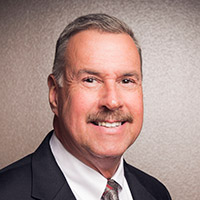Conservative Investors Have Reason to Cheer
For years they've been plagued by near-zero interest rates forcing them to look for gains in riskier places. Now that's changing.


Low interest rates have hit conservative investors hard, especially pre-retirees and retirees. The name of the game in retirement is income. However, with interest rates hovering around zero for so long, creating real, substantial income — while maintaining a conservative position — has been a challenge, to put it lightly.
Those challenges may be becoming less daunting, though, as the climate on interest rates has finally started to change. Here’s what’s going on and what it means for conservative investors today.
The tide turns; markets plunge, then boom
On Dec. 16, 2015, the Federal Open Market Committee (the Fed) announced the first interest-rate hike in almost a decade. Economists had been anticipating it for months, believing ultra-low interest rates were impeding economic recovery from the Great Recession, the more than 50% decline experienced by the S&P 500 from October 2007 to March 2009. Although the economy has been growing steadily, economists believed if interest rates returned closer to pre-recession levels, it would spark faster economic growth and expansion.

Sign up for Kiplinger’s Free E-Newsletters
Profit and prosper with the best of expert advice on investing, taxes, retirement, personal finance and more - straight to your e-mail.
Profit and prosper with the best of expert advice - straight to your e-mail.
When the members of the Fed raised interest rates, they were unable to forecast what would happen next. There’s nothing the market hates more than uncertainty, and that’s exactly what the first rate hike since 2006 caused. January 2016 proved to be the worst beginning to the stock market in history, with the S&P 500 finally bottoming out on Feb. 11, 2016, at 1829 — more than a 10% decline. Many investors chose to abandon ship during this period by pulling their funds from the market. The nausea caused by the torrential waves (i.e., market volatility) stirred up by the rate hike made them decide to head for the nearest lifeboat, but those investors who hung on for the ride experienced an average annual return of just under 12% for 2016.
Plans for further hikes get back on track
Originally, the Fed planned for four additional rate hikes in 2016 after their initial hike in December 2015. However, after the market’s reaction to the first hike, it wasn’t until Dec. 14, 2016, that the Fed would gain enough confidence to raise rates again. This caused them to completely miss the mark of raising rates four times throughout the course of the year, but along with their Dec. 14 hike, the Fed’s press release was teeming with confidence, projecting multiple rate hikes throughout 2017 due to a strengthening labor market, declining unemployment, increased household spending and rising inflation.
Even with two rate hikes under our belt, however, a one-year CD is paying a little over 1% at most local banks, and a five-year CD is paying about 2%. The story is the same with bonds and U.S. Treasuries. That’s a big problem for conservative investors. With inflation hovering around 2.2%, having money in these products means your investment is not keeping up with inflation, and you are consistently losing purchasing power.
The plight of conservative investors improves
These low returns on traditional income-bearing investments have pushed conservative investors into riskier investments with the hope of greater returns. This phenomenon has been noted consistently within the financial industry upon observing significant amounts of money flowing into high-dividend-paying portfolios. This is a risky game for conservative investors. Dividends can be a great source of income, but being over-weighted in equities provides little protection from market downturns. Taking money out of such a portfolio during a market correction can spell disaster for a retiree. Although 12% returns are nice, like the annual return on the S&P 500 for 2016, drawdowns like the one experienced at the beginning of that year can cripple an improperly allocated portfolio.
In short, the confidence coming from the Fed about raising rates is good news. It provides hope that traditional income-producing investments will once again be a viable option for conservative investors as they look to balance their portfolios while still creating the income they need.
As a financial adviser, I am the trusted captain of my client’s portfolios, and it is my job to see that my clients are able to obtain the income they need in retirement without being completely dependent upon the market. Keeping my clients diversified means, no matter what starts the next set of torrential waves, their portfolios may take on water but will not sink.
No part of this communication should be construed as an offer to buy or sell any security or provide investment advice or recommendation. Securities offered through GF Investment Services, LLC, Member FINRA/SIPC, 501 North Cattlemen Road, Suite 106, Sarasota, FL 34232. (941) 441-1902. Investment advisory services offered through Global Financial Private Capital, LLC, an SEC Registered Investment Advisor. Registration with the SEC does not imply any certain level of skill or training.
Get Kiplinger Today newsletter — free
Profit and prosper with the best of Kiplinger's advice on investing, taxes, retirement, personal finance and much more. Delivered daily. Enter your email in the box and click Sign Me Up.

Roger Ford has 30 years of experience in retirement income planning. After receiving his formal education at the University of Cincinnati, Ford started his own business, Conservative Financial Solutions. He is a Registered Financial Consultant (RFC) and obtained his certification through the International Association of Registered Financial Consultants. He actively holds Series 6, 63 and 65 licenses and is a licensed agent in life, accident and health and property and casualty insurance.
-
 Stock Market Today: Stocks Gain on Tech, Auto Tariff Talk
Stock Market Today: Stocks Gain on Tech, Auto Tariff TalkThe Trump administration said late Friday that it will temporarily halt tariffs on some Chinese tech imports.
By Karee Venema Published
-
 Sam's Club Plans Aggressive Expansion: Discover Its New Locations
Sam's Club Plans Aggressive Expansion: Discover Its New LocationsSam's Club expansion plans will open up to 15 new stores each year. Learn where they plan to open in 2025.
By Sean Jackson Published
-
 How Baby Boomers and Gen Xers Are Redefining Retirement Living
How Baby Boomers and Gen Xers Are Redefining Retirement LivingBoth generations need to embrace change and leverage real estate as a dynamic asset in their retirement planning. Here's how financial advisers can help, too.
By David Conti, CPRC Published
-
 How Good Advisers Manage Risk in Challenging Markets
How Good Advisers Manage Risk in Challenging MarketsThey understand the difference between what might be real challenges to an investor's strategy and fear brought on by market volatility.
By Ryan L. Kirk, CFA® Published
-
 Financial Planning's Paradox: Balancing Riches and True Wealth
Financial Planning's Paradox: Balancing Riches and True WealthWhile enough money is important for financial security, it does not guarantee fulfillment. How can retirees and financial advisers keep their eye on the ball?
By Richard P. Himmer, PhD Published
-
 A Confident Retirement Starts With These Four Strategies
A Confident Retirement Starts With These Four StrategiesWork your way around income gaps, tax gaffes and Social Security insecurity with some thoughtful planning and analysis.
By Nick Bare, CFP® Published
-
 Should You Still Wait Until 70 to Claim Social Security?
Should You Still Wait Until 70 to Claim Social Security?Delaying Social Security until age 70 will increase your benefits. But with shortages ahead, and talk of cuts, is there a case for claiming sooner?
By Evan T. Beach, CFP®, AWMA® Published
-
 Retirement Planning for Couples: How to Plan to Be So Happy Together
Retirement Planning for Couples: How to Plan to Be So Happy TogetherPlanning for retirement as a couple is a team sport that takes open communication, thoughtful planning and a solid financial strategy.
By Andrew Rosen, CFP®, CEP Published
-
 Market Turmoil: What History Tells Us About Current Volatility
Market Turmoil: What History Tells Us About Current VolatilityThis up-and-down uncertainty is nerve-racking, but a look back at previous downturns shows that the markets are resilient. Here's how to ride out the turmoil.
By Michael Aloi, CFP® Published
-
 Could You Retire at 59½? Five Considerations
Could You Retire at 59½? Five ConsiderationsWhile some people think they should wait until they're 65 or older to retire, retiring at 59½ could be one of the best decisions for your quality of life.
By Joe F. Schmitz Jr., CFP®, ChFC® Published